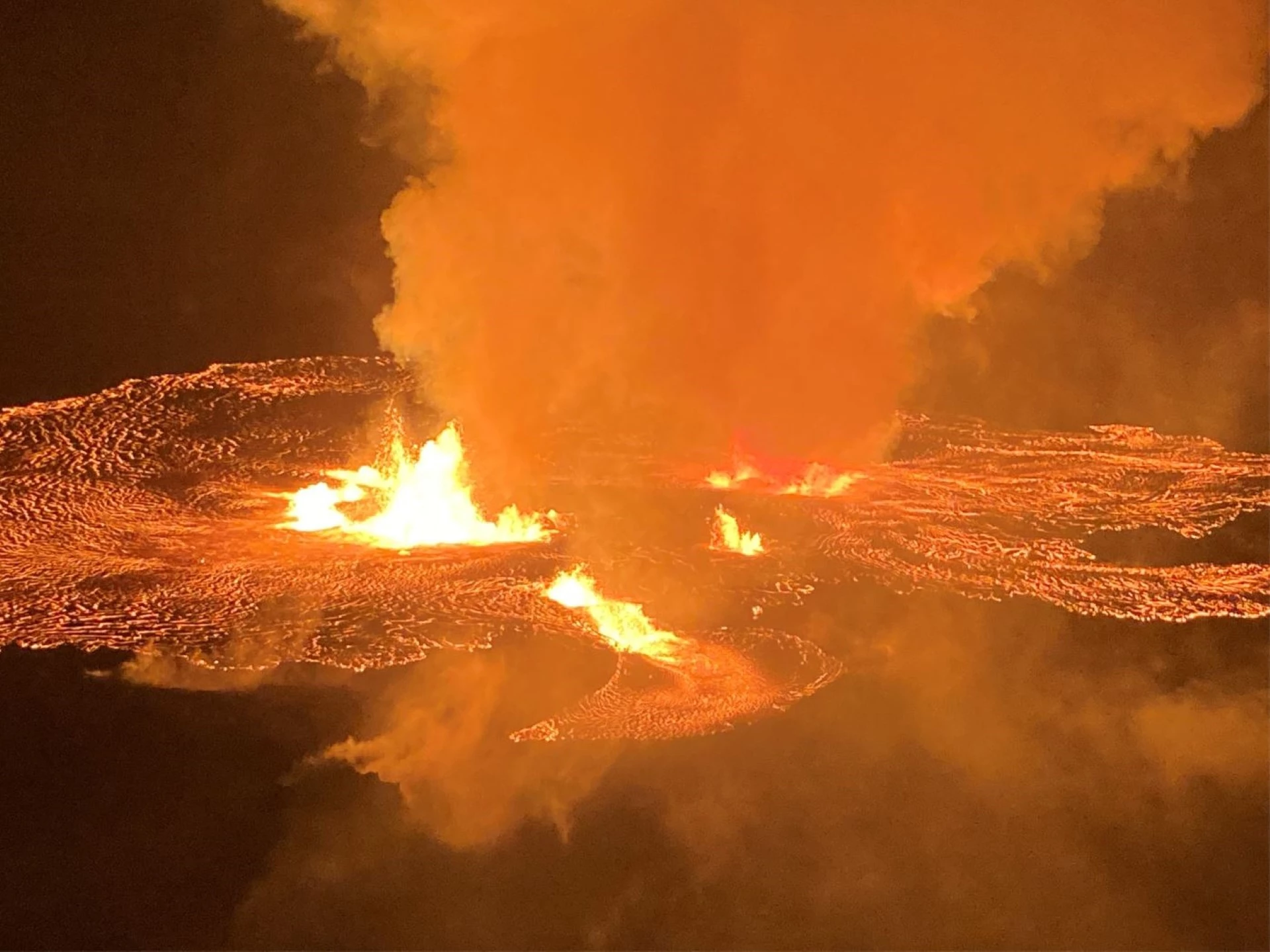Hawaii volcano erupts again

Stay tuned with 24 News HD Android App

One of the world's most active volcanoes has erupted again, with lava spewing from Kilauea in Hawaii on Wednesday.
Footage showed fissures have opened up at the base of a crater on the volcano, which regularly springs to life, with vulcanologists calling the eruption "dynamic."
Scientists at the United States Geological Survey said they began detecting activity early on Wednesday morning, all well within the confines of the Hawai'i Volcanoes National Park, and away from population centers.
Hawaii’s second-largest volcano began erupting Wednesday morning, displaying a dynamic fiery show after three months of inactivity. Kilauea is one of the world’s most active volcanoes and has erupted dozens of times over the past seven decades. https://t.co/I43hyLBCpw pic.twitter.com/tO0lXdUveL
— The Washington Post (@washingtonpost) June 8, 2023
"High levels of volcanic gas are the primary hazard of concern, as this hazard can have far-reaching effects down-wind," the USGS said.
"As (sulphur dioxide) is released from the summit, it will react in the atmosphere to create the visible haze known as vog (volcanic smog) that has been observed downwind of Kilauea. "
Video recorded by #HVO geologists of the new #Kilauea eruption. This clip is from the west rim of the crater at approximately 6 a.m. HST. Telephoto view shows multiple active vent sources and lava flooding the crater floor. pic.twitter.com/5pq6CUbOQb
— USGS Volcanoes🌋 (@USGSVolcanoes) June 7, 2023
This vog can create breathing difficulties for people and animals, and can also affect crops, the agency said.
The eruption could also produce a phenomenon called "Pele's hair" -- tiny slivers of volcanic glass that can be irritating to exposed skin, and can cause eye problems. Pele is the Hawaiian goddess of fire and volcanoes.
BREAKING: #Kilauea is erupting on the Big Island of #Hawaii.
— Matthew Cappucci (@MatthewCappucci) June 7, 2023
The eruption began at 4:44 a.m. HST.
Sulfur dioxide and water vapor spewed from the volcano are reacting to produce vog, or volcanic smog, which can have adverse health effects. Volcanologists still assessing risks. pic.twitter.com/TnAyS6qZbS
The eruption comes months after Kilauea's bigger neighbor Mauna Loa treated volcano watchers to a spectacular display.
Mauna Loa, the world's biggest volcano, put on a weeks-long show at the end of last year as it erupted for the first time in four decades, with lava fountains 60 meters high that sent rivers of molten rock down the flanks.
Kilauea is much smaller than Mauna Loa, but is far more active, and regularly wows helicopter-riding tourists who come to see its red-hot shows on Hawaii's Big Island.
Kilauea is one of six active volcanoes on the Hawaiian islands.
It erupted almost continuously between 1983 and 2019.
